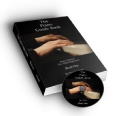The Piano Action
The piano action is a marvelous work of engineering developed over centuries with many individuals improving the design to create what we have today.
The action has quite a job to do. It has to throw the hammer up towards the string when the key is depressed, but the hammer must retreat immediately after striking the string, and not try to go further than the string. If it does, it will sit against the string, and damp out the sound.
When the hammer bounces off of the string, it cannot rebound back up towards the string, or again, it may damp out the sound.
The hammer must move faster than the key, so that it is at rest, and ready to hit the string again, if the note is repeated.
The hammer has to travel a small distance after the key is struck, but stil give the player good control of the piano's dynamics.
And...the action has to perform all of this in a fraction of a second!
The Grand Piano Action
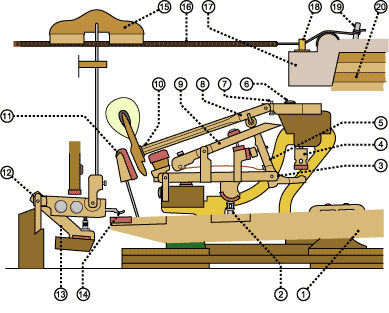
1. Key
2. Capstan
3. Wippen
4. Regulating Screw
5. Jack
6. Hammer Flange Screw
7. Drop Screw
8. Hammer Shank
9. Repetition Lever
10. Hammer
11. Back Check
12. Damper Lever
13. Damper Tray
14. Spoon
15. Damper
16. String
17. Plate
18. Agraffe
19. Tuning Pin
20. Pin Block
What Happens When You Press A Key
The key front goes down, the key back goes up, pushing on the capstan, which pushes the wippen, which pushes the jack, which pushes on the hammer knuckle (circle under the hammer shank).
When the hammer is half way to the string, the back of the key begins to lift the damper lever.
When the hammer is almost at the string, the jack toe hits the letoff button (regulating screw), and the jack slips out from under the knuckle, freeing the hammer to continue on its own inertia.
The hammer hits the string, and rebounds. The knuckle lands on the repetition lever, pushing down the repetition lever.
The hammer tail catches on the back check, and remains there until the key is released.
The Upright Piano Action
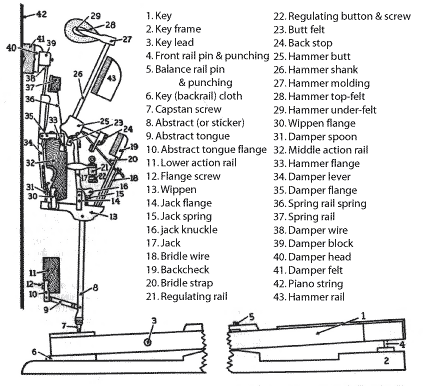
The console piano action is very similar to the full size upright action (shown here), except it doesn't have the abstract (or sticker), #8 on the diagram. In the console piano, the capstan pushes directly on the wippen, hence the name "direct blow" action.
The Spinet Piano Action
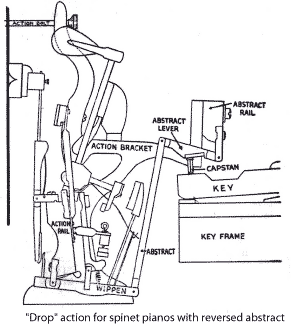
The Spinet piano action, also called a "drop" action, has a reversed abstract. The abstract pushes down below the height of the key when the key is depressed. This makes it more difficult to get at the action parts in a spinet piano.
Most of the other action parts are the same as in the upright action.
Start Playing Piano Today with the Piano Guide Quick Start Course!
Easy to follow step-by-step lessons designed for adult beginners. The next best thing to private lessons!
What You'll Learn:
- Notes on the piano/keyboard
- Proper fingering
- C major scale
- Chords
- How to read music
- And much more!
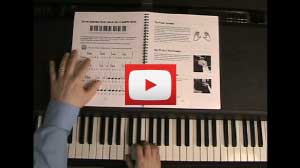
Video lessons - watch as I play everything for you.
